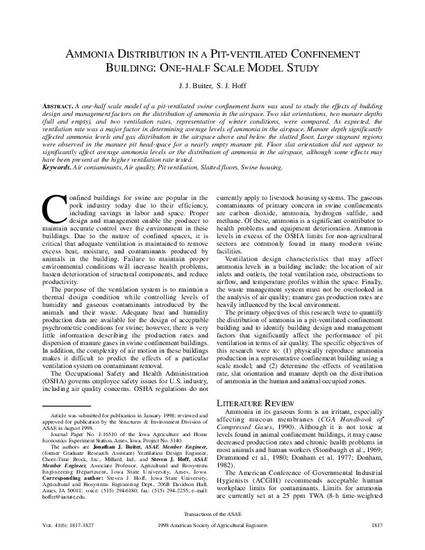
A one-half scale model of a pit-ventilated swine confinement barn was used to study the effects of building design and management factors on the distribution of ammonia in the airspace. Two slat orientations, two manure depths (full and empty), and two ventilation rates, representative of winter conditions, were compared. As expected, the ventilation rate was a major factor in determining average levels of ammonia in the airspace. Manure depth significantly affected ammonia levels and gas distribution in the airspace above and below the slatted floor. Large stagnant regions were observed in the manure pit head-space for a nearly empty manure pit. Floor slat orientation did not appear to significantly affect average ammonia levels or the distribution of ammonia in the airspace, although some effects may have been present at the higher ventilation rate tested.
Available at: http://works.bepress.com/steven_hoff/37/

This article is from Transactions of the ASAE 41, no. 6 (1998): 1817–1827.